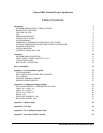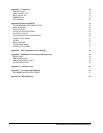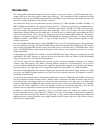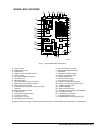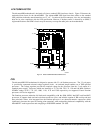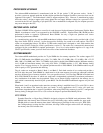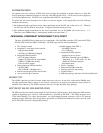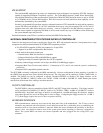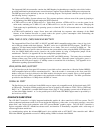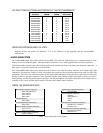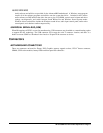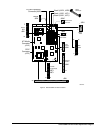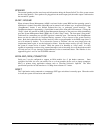
Advanced/RH Technical Product Specification •• Page 11
IDE SUPPORT
The Advanced/RH motherboard provides two independent high performance bus-mastering PCI IDE interfaces
capable of supporting PIO Mode 3 and Mode 4 devices. The system BIOS supports Cylinder Sector Head (CHS),
Logical Block Addressing (LBA) and Extended Cylinder Sector Head (ECHS) translation modes as well as ATAPI
(e.g. CD-ROM) devices on both IDE interfaces. IDE device transfer rate and translation mode capability can be
automatically determined by the system BIOS.
Normally, programmed I/O operations require a substantial amount of CPU bandwidth. In multi-tasking operating
systems like Microsoft Windows 95, the CPU bandwidth freed up by using bus mastering IDE can be used to
complete other tasks while disk transfers are occurring. A driver is required for the IDE interface to operate as a
PCI bus master capable of supporting PIO Mode 4 devices with transfer rates up to 22 MB/sec while minimizing
the system demands upon the processor.
Detailed information on the PCIset is available in the Intel 82430HX PCIset data sheet.
NATIONAL SEMICONDUCTOR PC87306B SUPER I/O CONTROLLER
Control for the integrated serial ports, parallel port, floppy drive, RTC and keyboard controller is incorporated into a single
component, the National Semiconductor PC87306B. This component provides:
• Two NS16C550-compatible UARTs with send/receive 16 byte FIFO
— Support for an IrDA compliant Infra Red interface
• Multi-mode bi-directional parallel port
— Standard mode; IBM
†
and Centronics
†
compatible
— Enhanced Parallel Port (EPP) with BIOS/Driver support
— High Speed mode; Extended Capabilities Port (ECP) compatible
• Industry standard floppy controller with 16 byte data FIFO (2.88 MB floppy support)
• Integrated Real Time Clock accurate within +/- 13 minutes/yr at 25º C and 5 volts when the system is continuously
powered on
• Integrated 8042 compatible keyboard controller
The PC87306B is normally configured by the BIOS automatically. However configuration of these interfaces is possible via
the CMOS Setup program that can be invoked during boot-up. The serial ports can be enabled as COM1, COM2, IrDA, or
disabled. The parallel port can be configured as normal, extended, EPP/ECP, or disabled. The floppy interface can be
configured for 360 KB or 1.2 MB 5¼” media or for 720 KB, 1.2 MB, 1.44 MB, or 2.88 MB 3½” media. Header pins located
near the back of the board allow cabling to use these interfaces
FLOPPY CONTROLLER
The PC87306B is software compatible with the DP8473 and 82077 floppy disk controllers. The floppy interface
can be configured for 360 KB or 1.2 MB 5¼” media or for 720 KB, 1.2 MB, 1.44 MB, or 2.88 MB 3½” media in
the BIOS setup. By default, the Floppy A interface is configured for 1.44 MB and Floppy B is disabled. Another
setup option prevents the user from being able to write to floppy. Configuring the floppy interface for 1.2 MB 3
½” (3-mode floppy) requires the use of a driver to operate correctly.
KEYBOARD INTERFACE
PS/2 keyboard/mouse connectors are located on the back panel side of the motherboard. The 5V lines to these
connectors are protected with a PolySwitch
†
circuit which acts much like a self-healing fuse, re-establishing the
connection after an over-current condition is removed. While this device eliminates the possibility of having to
replace a fuse, care should be taken to turn off the system power before installing or removing a keyboard or
mouse. The system BIOS can detect and correct keyboards and mice plugged into the wrong PS/2
†
style
connector.



